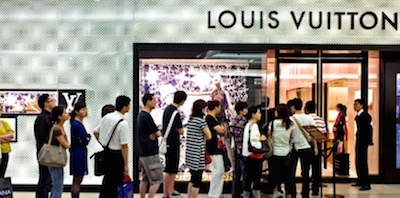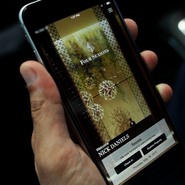China’s outbound luxury travelers spend $65,000 per household on tourism per year, including $34,000 on travel shopping, according to a new study from the Hurun Research Institute and Marriott International.
Chinese outbound tourists have long been a high-priority group for luxury brands, but the demands and habits of younger travelers are changing quickly. The digital natives aged between 18 and 36 years old want a more personalized experience, including superior guest services and smart device integration.
“Despite the economy slowing, the impact on outbound travel from high net worth individuals seems to have steadily grown,” said Rupert Hoogewerf, chairman and chief researcher at Hurun. “The young luxury travelers has developed significant spending firepower, minted on the back of the recent boom in Chinese entrepreneurship, together with a growing class of second generation ‘rich kids.’”
“Chinese Luxury Traveler 2016” examines the habits, priorities and trends of Chinese consumers with a net worth of at least $15,000,000 and those between 18-36 years old.
Generation Y
China’s young luxury travelers go abroad between three and four times a year on average, primarily for leisure. While France remains the most popular destination in Europe, Japan is the preferred shopping destination given its proximity and favorable exchange rates, while Australia is the preferred leisure destination.

Image courtesy Peninsula hotels
Australia has long been a developed economy, but it is less commonly seen as a haven for growth than North America, and luxury’s home in Europe has also pushed Australia to the back burner for many brands aiming to capitalize on China’s growing tourism rates. A strong presence in Australia could entice wealthy vacationers to make a purchase.
Moreover, western brands should be aware that summer travel is less common in China. National Day Golden Week travel in the early fall and travels for Chinese New Year are nearly two and three times as likely, respectively.
As with North America’s millennials, China’s young travelers get most of their travel information digitally, largely from official WeChat accounts, underscoring the platform’s importance. C-Trip, Qunar and Tuniu are also popular third-party platforms on which hotels should strive for good placement.

Line outside a Louis Vuitton boutique
While the above generation is more closely defined by a desire for material goods, a reaction to globalization and advertising in the wake of China’s emergence from poverty, its young travelers strive for more adventurous travel. Hotels and retailers alike should tailor messages to these consumers to emphasize experiential components and offerings.
More specifically, over the next three years global travel is expected to increase 25 percent, while polar exploration grows 32 percent, adventure travel by 52 percent and road trips by 75 percent.

Montblanc Rouge et Noir WeChat message
However, personalized service is still the biggest consideration in traveling for luxury travelers. Besides a liking for amenities, being able to choose pillows of different firmness and having a butler or personalized service through digital channels are also important. Seventy-three percent demand WiFi while 55 percent want smart TVs, while unique art and design are also high draws.
Luxury’s savior
With luxury growth stalling around the world and quarterly earnings being largely at the mercy of Chinese tourists and which markets they enter, the country remains the top concern for marketers. As it transitions to a consumer-driven economy, China’s growth has fallen below the double-digits that were beginning to feel normal, but it still offers enormous opportunity.
Chinese residents will make 90 million outbound trips in 2020, with that number increasing by an additional 36 million over the following decade, according to a report by Euromonitor.
As reported in “How to Target Chinese Shoppers Abroad,” outbound trips have increased on average by an impressive 13 percent since 2000, helping China overtake Japan as the second largest consumer market in 2011. With the significance and size of the Chinese tourist market only projected to swell, brands will need to develop a more nuanced understanding of the market in order to reach consumers (see story).
However, as brands cater to Generation Y consumers and look to the future, they must be as aware of generational differences in China as they are in the West.
In a reversal of the more materialistic tendencies of their parents, almost 95 percent of Chinese Generation Z consumers say it is essential for brands to be sustainable and environmentally conscious, according to a report by RTG Consulting.
The continued growth of China over the next several years will ensure that its consumers remain prime targets for brands for the foreseeable future, as even a slowed China exceeds the growth rate of western nations. As a result, brands will need to make a connection to this group, the first born in a fully modern China, in the interest of long-term success (see story).
from Travel and hospitality – Luxury Daily https://www.luxurydaily.com/chinese-travelers-want-personalized-service-embracing-experiential-report/
via Your #1 Source to Finding Luxury & Designer Goods, Handbags & Clothes at or Below Wholesale: Click Here.

No comments:
Post a Comment